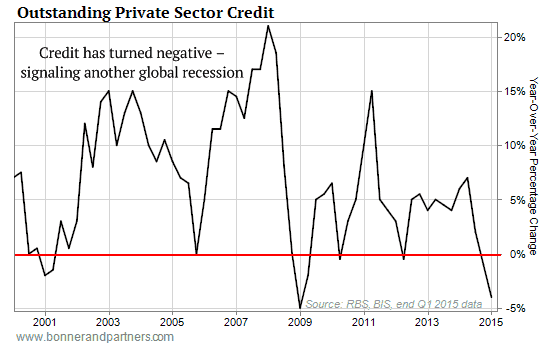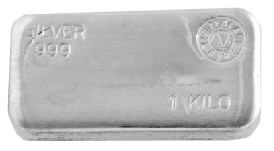This Week:
- Bank Deposit Insurance vs Open Bank Resolution (aka Depositor haircuts)
- One Trillion Dollars’ Worth of Bonds Magically Turn into Cash
- Saudi Arabia to Devalue – Impact on PetroDollar?
- Is the Global Collapse Orchestrated?
- Central Bankers and Govts Have it all Under Control
- The Curse of the Chinese Skyscraper – Coming to NZ?
|
LIMITED QUANTITY GOLD SPECIAL ***** 1oz Perth Mint 99.99% Gold Bars Black Packaging (Approx $1804) (20 black in stock) Ph 0800 888 465 and speak to David or reply to this email. |
Prices and Charts
| Spot Price Today / oz | Weekly Change ($) | Weekly Change (%) | |
|---|---|---|---|
| NZD Gold | $1704.44 | + $36.19 | + 2.16% |
| USD Gold | $1087.60 | – $0.60 | – 0.05% |
| NZD Silver | $22.05 | + $.85 | + 4.00% |
| USD Silver | $14.07 | + $0.23 | + 1.73% |
| NZD/USD | 0.6381 | – 0.0142 | – 2.17% |
NZ Dollar Continues Sharp Fall
NZ Dollar gold and silver prices are up on last week care of an even weaker Kiwi dollar. This morning the dollar dropped even further. Just under a cent in fact, after Statistics NZ data was released showing that inflation came in at its lowest since 1999.
This was on top of another slight fall of 1.4% in the overnight diary auction amid more concerns about China slowing down and lacking demand.
China’s Growth Slowest in 25 Years
China’s economy officially grew by 6.9% in 2015. That’s compared with 7.3% a year earlier, marking its slowest growth in a quarter of a century. This is a major concern for global investors. Source.
ANZ economists believe Fonterra will have to trim its $4.60 milk price pick as the hoped-for recovery in global dairy prices remains elusive. Source.
A note just in from ASB – they have also trimmed their forecast by 50 cents to $4.10/kg. However ASB is:
You can see in the NZ Dollar chart above that it has fallen very sharply since New Year and is getting pretty oversold. So our guess is that it is due a bounce here.
If it does this may push the NZ dollar prices of gold and silver both lower in the short term. NZD gold is holding around its 200 day moving average (MA) as seen below.
While NZD Silver is hovering around its 50 day MA.
Bank Deposit Insurance vs Open Bank Resolution (aka Depositor Haircuts)
We’ve discussed many times in the past how since the end of 2011 bank deposits in NZ are not guaranteed. If a bank fails in NZ its depositors are in line for a “haircut” on their bank account holdings instead.
See here for more detail on this:
RBNZ Bank “Bail In” Scheme for Bank Failures: The Open Bank Resolution (OBR)
Gareth Vaughan from interest.co.nz (who can be commended for giving way more coverage to the issue than anyone else in the media), argues the RBNZ has inadvertently made a case for deposit insurance as disclosure statements don’t cut the mustard for the average depositor.
In a nutshell, he argues that bank disclosure statements which are to be replaced with an RBNZ “dashboard” on banks are of no real use to the average punter in determining how solvent a bank is. So we’d be better off having a bank deposit insurance and guarantee up to a specified level.
Hard to argue with that. For one, given the low level of financial education and knowledge in this country. But secondly if one of the major banks fail in NZ, it’s highly likely it will be to a systemic shock and they’d all be affected. So it wouldn’t matter what the “disclosure statement” you’d read previously had said about the level of “assets” the bank had.
He finishes up by saying:
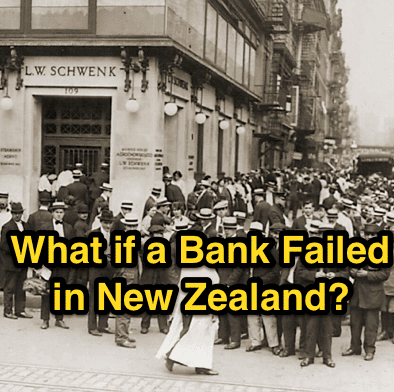 We’ve already given our take on the Deposit Guarantee/Insurance vs the OBR. We have both feet firmly in neither camp. See this article for the reasons why:
We’ve already given our take on the Deposit Guarantee/Insurance vs the OBR. We have both feet firmly in neither camp. See this article for the reasons why:
Bank Failures: Will New Zealand be Cyprussed?
One Trillion Dollars’ Worth of Bonds Magically Turn into Cash
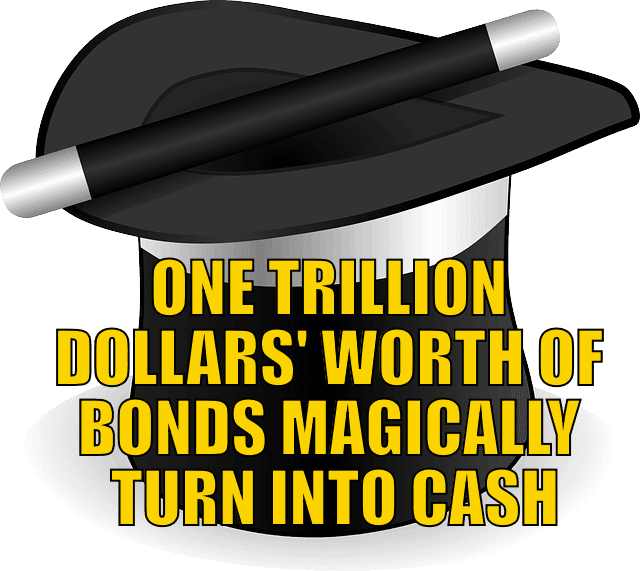 This week we have another article from mexican Billionaire and silver proponent Hugo Salinas price following on from last weeks piece about the plunging level of global central bank reserves.
This week we have another article from mexican Billionaire and silver proponent Hugo Salinas price following on from last weeks piece about the plunging level of global central bank reserves.
He ponders where these $1 trillion worth of bonds have gone to?
One Trillion Dollars’ Worth of Bonds Magically Turn into Cash
But it’s not just Central Bank Reserves plunging. Private sector credit growth has also turned negative as the below chart form Bill Bonners Diary of a rogue Econmist shows. They wondered whether:
“Maybe today’s chart has something to do with Royal Bank of Scotland’s recent call to “sell everything”…
As you can see, credit growth has now turned negative.
Going back 15 years, the only two previous times this happened – in 2001 and 2009 – it coincided with global recessions.”
So just another of many warnings appearing that we may be getting near the end of the current up cycle. Even the World Bank is in on the act:
Here’s Kaushik Basu, head economist of the World Bank:
“There are severe fault lines beneath the surface. The global economy, and in particular the emerging economies, could hit a severe road bump.” Source.
This is the third year in a row that the World Bank has trimmed its global growth forecast. It reduced its global GDP growth forecast from +3.3% to +2.9%.
Preparation also means having basic supplies on hand.Are you prepared for when the shelves are bare?

For just $265 you can have 1 months long life emergency food supply.
Learn More.
—–
Saudi Arabia to Devalue – Impact on PetroDollar?
The price of oil continues to languish hitting new lows this week around $29 per barrel. Jim Rickards believes the Saudi’s have shot themselves in the foot by trying to take out the US fracking industry. He also believes they will fire the next salvo in the currency wars:
“A new Middle East is emerging in which the U.S. is less visible and regional leaders take up the slack. And it’s opening up another front in the currency wars that have been going on since 2010. The next shock will come out of the Middle East.
Switzerland shocked the world in January 2015 when they de-pegged the Swiss franc from the euro. This shock devaluation caused massive losses in hedge funds that had shorted the franc. In August 2015, China shocked the world with a surprise devaluation of the yuan against the U.S. dollar. That shock caused a U.S. equity market meltdown.
Now get ready for a third devaluation shock in the currency wars, courtesy of Saudi Arabia…
The Saudis are bleeding reserves maintaining a peg to the U.S. dollar and running deficits at the same time. The fastest way to reduce those deficits is by reducing local currency costs by devaluation against the dollar.
The Saudi riyal has been pegged to the U.S. dollar for decades. That peg is part of the petrodollar deal worked out between the U.S. and Saudi Arabia in the mid-1970s. That deal said Saudi Arabia would price oil in dollars, and recycle those dollars through U.S. banks. Those banks would then lend to other emerging markets that would buy U.S. manufactured goods. Everybody won and the band played on.
Now the U.S. is stabbing Saudi Arabia in the back. The U.S. is empowering Iran to confront Saudi Arabia. The strong dollar and low price of oil is strangling the Saudi economy and causing a drain on Saudi reserves. At current rates of capital flight, Saudi Arabia will soon be broke with nothing left except low-priced oil that no one wants.
The Saudi plan to kill the U.S. fracking industry has had unforeseen consequences. The Saudis calculated that a price in the $50-60 per barrel range would cause new drilling to cease and shut in some existing wells, without hurting Saudi revenue more than necessary.
But with oil now trading around $30, the Saudis have lost vast amounts of revenue and are facing large budget deficits. Breaking the dollar peg is one way to ease the pain.
The World Bank is now telling Saudi Arabia to keep the dollar peg. But the World Bank has a legacy of bad advice, and is well-known for serving U.S. interests, not those of its clients and members. Look for Saudi Arabia to ignore the World Bank and devalue anyway.”
Is the Global Collapse Orchestrated?
Rickards view is generally very US centric and discusses the battle going on between nation states. However an alternative view and one we favour is that it is all stage managed.
Here’s a brief excerpt from an interview with Brandon Smith of Alt-market.com answering the question: “Is the larger collapse orchestrated or evolutionary?”
“Brandon Smith: I have based all of my work and predictions on the knowledge that the collapse is absolutely deliberate in nature. The internationalists and central banks openly admit to their pursuit of what Christine Lagarde at the IMF calls the “global economic reset.” If you want to know what they really mean by “reset,” you can go read a 1988 issue of the Rothschild-owned magazine The Economist in an article titled “Get Ready For A World Currency By 2018.” Nearly every measure outlined in that article has taken place, but the U.S. still needs to be reduced in economic footprint to make way for the new global basket currency (Special Drawing Rights).
Most recently, I predicted the Fed taper of QE despite serious opposition from other analysts in the movement. I predicted the inclusion of China in the SDR. I predicted the exact timing of the first interest rate hike, again with considerable opposition at the mere notion. And, I predicted the market turmoil that we are now seeing due to the rate hike – all on the foundation that there is a concerted effort to position America for an engineered collapse. If you assume that the Federal Reserve exists to prolong or protect the life of the American economy, then you will never be able to grasp or predict the event now taking place. If you realize that the Fed is a saboteur of the American economy, everything falls into place.
…the Fed has a habit of making financial crises worse by raising rates into a deflationary spiral. They did it during the Great Depression and they are doing it again today. The primary trigger of the current market panic, though, is the fact that most major banks and corporations have been relying on no-cost overnight loans from the Fed to issue stock buybacks. That is OVER. The rate hike kills that method of propping up markets. There is really nothing left to keep them afloat. The trend for the rest of the year will be down, down, down, with sporadic up days amounting to nothing more than a dead cat bounce.
Anthony Wile: Is the larger collapse inflationary or deflationary?
Brandon Smith: A mixture of both. We are really looking at a stagflationary or hyper-stagflationary event. Elements of the economy will violently deflate while other goods and services and properties will hyperinflate. It’s basically the worst of both worlds.
Anthony Wile: How bad does it get?
Brandon Smith: In order to meet their stated global currency goals, the internationalists will have to drop a sledgehammer on the dollar. Only a massive currency crisis will manufacture the consent from the masses required to introduce a global basket system as the new reserve. Since the only thread left holding our financial system together is the dollar’s reserve status, I can only imagine that the resulting decline would be historic in nature and devastating to the current population.
Central Bankers and Govts Have it all Under Control
But back here in NZ, everything seems to be okay – well on the surface at least.
We think this opinion piece from Peter Lyons who teaches economics at Saint Peters college in Epsom, sums up the thoughts of many that Governments globally have it all “under control”.
“Here’s a big prediction. The Auckland housing market is unlikely to experience a dramatic crash or correction any time soon.
It may stagnate at some stage for a long time. Median prices may even dip but significant sustained price falls are unlikely. The reason is that it is too big to fail. A housing crash would be calamitous for our economy and society. The economic tools are available to prevent such a scenario regardless of the cost.
But one thing is certain. Governments have learned a lesson from the global financial crisis of 2007/8.
They have learned how to avoid a repeat of the Great Depression of the 1930s. The crucial lesson is that it is preferable to flood an economy with easy credit rather that suffer the consequences of a systemic failure of a banking system. This approach is the lesser of two evils, but it is still an evil.
So the Chinese government, the American government, the British government and governments in much of the rest of the world have realised they possess an alchemy that will prevent a major depression. If the worst comes to the worst their central banks can pump their economies full of new money in the form of easy credit. If the private sector proves unwilling to borrow and spend then a central government could always step in and use cheap borrowing to boost its own spending to keep the economy afloat.”
To be fair later in the article he goes on to outline the problems in NZ, but the overall premise is that even under a worst case scenario, the government will step in and solve things.
We have our doubts. Rather it seems the cracks have been papered over and have lulled most into expecting that central planners do indeed have everything under control.
This will be when precious metals will really shine. When the people lose faith in central banks omnipotence.
Meantime prices continue to rise…
NZ Tops World in Fitch House Price Comparison
“New Zealand has been described as the most expensive country in the world to buy property by a global ratings agency.
Fitch has released its global housing and mortgage outlook report for this year and rates New Zealand’s houses as the priciest compared to incomes.”
Of course maybe we remain cheap to overseas buyers based upon their income. But with what’s going on in China it seems to us that maybe the money flowing into NZ from there is drying up.
The Curse of the Chinese Skyscraper – Coming to NZ?
From the Daily Reckoning:
“The curse of the skyscraper strikes again!
The 2,073 foot Shanghai Tower weighed in as the world’s second-tallest building last week. Made from the shiniest glass, the truest steel and the shakiest credit imaginable, this Paul Bunyan of China is topped only by Dubai’s Burj Khalifa.
And the gods decided it was time for a lesson. They sent the Chinese stock market crashing the very day this giant opened. It plunged 7% in a half-hour. They had to shut the damn thing down before it got worse.
British economist Andrew Lawrence hatched the “skyscraper index” in 1999. He sleuthed out an odd correlation running back to 1907: Skyscraper construction ran in tandem with the business cycle. Construction goes into full swing at the height — get it? — of the boom. The bust follows hot on its tail.
Lawrence found it was an accurate timepiece for dating major economic downturns. He called his index an “unhealthy 100-year correlation.”
Does it exist? Or was this guy hearing voices? Here’s economist Mark Thornton:
The ability of the index to predict economic collapse is surprising. For example, the Panic of 1907 was presaged by the building of the Singer Building (completed in 1908) and the Metropolitan Life Building (completed in 1909). The skyscraper index also accurately predicted the Great Depression with the completion of 40 Wall Tower in 1929, the Chrysler Building in 1930 and the Empire State Building in 1931.
It continued in the ’70s with the World Trade Center and Sears Tower. Construction began during the go-go ’60s — a sustained boom. It all about-faced in 1970. That raised the curtain on a decade of stagflation, OPEC… and leisure suits. Locust years, the ‘70s.
Then there were the Petronas Towers in Kuala Lumpur, Malaysia. They were completed in 1997 — just in time for the “Asian contagion.”

We’re dizzy just looking at it. Not from the height of the buildings — we’re not afraid of heights. But from the height of the manias that spawn them. Especially the ‘20s.
Is the skyscraper index Rolex accurate? No. But it forecasts booms and busts better than the Fed.
Will the curse of the skyscraper do a number on China? Maybe the Chinese economy was a classic case of “too much too fast,” skyscraper index or not. Fact: China used more concrete from 2011–13 than the United States used for the entire 20th century.
And now Nemesis is on the scene. China’s stock market is cratering. Its massive construction boom is kaput. Exports are down. Soon rice bowls will be cracking all over China. The IMF’s chief economist even said he’s placing China’s struggling economy toward the top of his watch list for 2016.
And China been devaluing its currency like it’s no one’s business. That’s prompted fears of a new currency war. It’s also prompted fears that it’s “exporting deflation” to America. That’ll complicate the Fed’s 2% inflation dreams.”
Perhaps similar things are happening here in New Zealand? With the 2nd tallest building in NZ due to start this year with completion due in 2020. We recall the Auckland Skytower was completed in 1997 just in time for the Asian Financial Crisis. Maybe NZ is due to peak out in the next few years too?
Also a couple months back we mentioned the number of cranes on the Auckland Skyline as an indicator of the economic cycle here being closer to the top than the bottom.
See: Liam Dann: Counting cranes with the kids
So perhaps we are edging closer to a change of course here too? Good time to move out of some overvalued assets and into those closer to the bottom than the top perhaps?
Free delivery anywhere in New Zealand
We’ve still got free delivery on boxes of 500 x 1oz Canadian Silver Maples delivered to your door via UPS, fully insured.
Todays price is $14,050 and delivery is now about 3 weeks.
All our suppliers are back on deck, so let us know if you’d like a quote for anything.
— Prepared for Power Cuts? —
[New] Inflatable Solar Air Lantern
Check out this cool new survival gadget.
It’s easy to use. Just charge it in the sun. Inflate it. And light up a room.
6-12 hours of backup light from a single charge! No batteries, no wires, no hassle. And at only 1 inch tall when deflated, it stores easily in your car or survival kit.
Plus, it’s waterproof so you can use it in the water.
This Weeks Articles: |
 |
|
 |
|
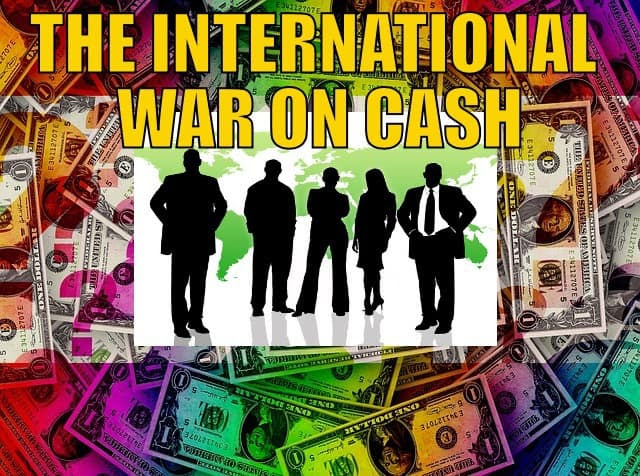 |
|
As always we are happy to answer any questions you have about buying gold or silver. In fact, we encourage them, as it often gives us something to write about. So if you have any get in touch.
|
| Today’s Spot Prices
Spot Gold |
|
| NZ $ 1704.44 / oz | US $ 1087.60 / oz |
| Spot Silver | |
| NZ $ 22.05 / oz
NZ $ 708.90 / kg |
US $ 14.07 / oz
US $ 452.35 / kg |
| 7 Reasons to Buy Gold & Silver via GoldSurvivalGuide
Today’s Prices to Buy |
| Can’t Get Enough of Gold Survival Guide?
If once a week isn’t enough sign up to get daily price alerts every weekday around 9am Click here for more info |
Our Mission
|
| We look forward to hearing from you soon.
Have a golden week! David (and Glenn) Ph: 0800 888 465 From outside NZ: +64 9 281 3898 |
 |
 |
| The Legal stuff – Disclaimer:
We are not financial advisors, accountants or lawyers. Any information we provide is not intended as investment or financial advice. It is merely information based upon our own experiences. The information we discuss is of a general nature and should merely be used as a place to start your own research and you definitely should conduct your own due diligence. You should seek professional investment or financial advice before making any decisions. |
Unsubscribe | Report Abuse
Gold Survival Guide
PO Box 74437
Greenlane Auckland 1546
New Zealand
| Copyright © 2015 Gold Survival Guide.
All Rights Reserved. |
To learn about what happens to your money if a bank fails in New Zealand see: Bank Failures | Could they happen in NZ | The Reserve Bank thinks so






